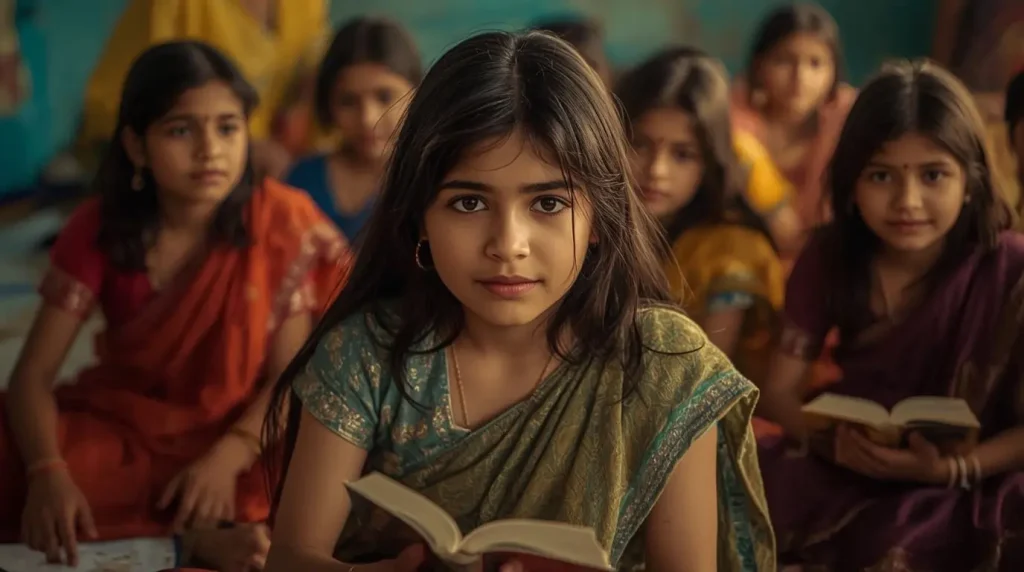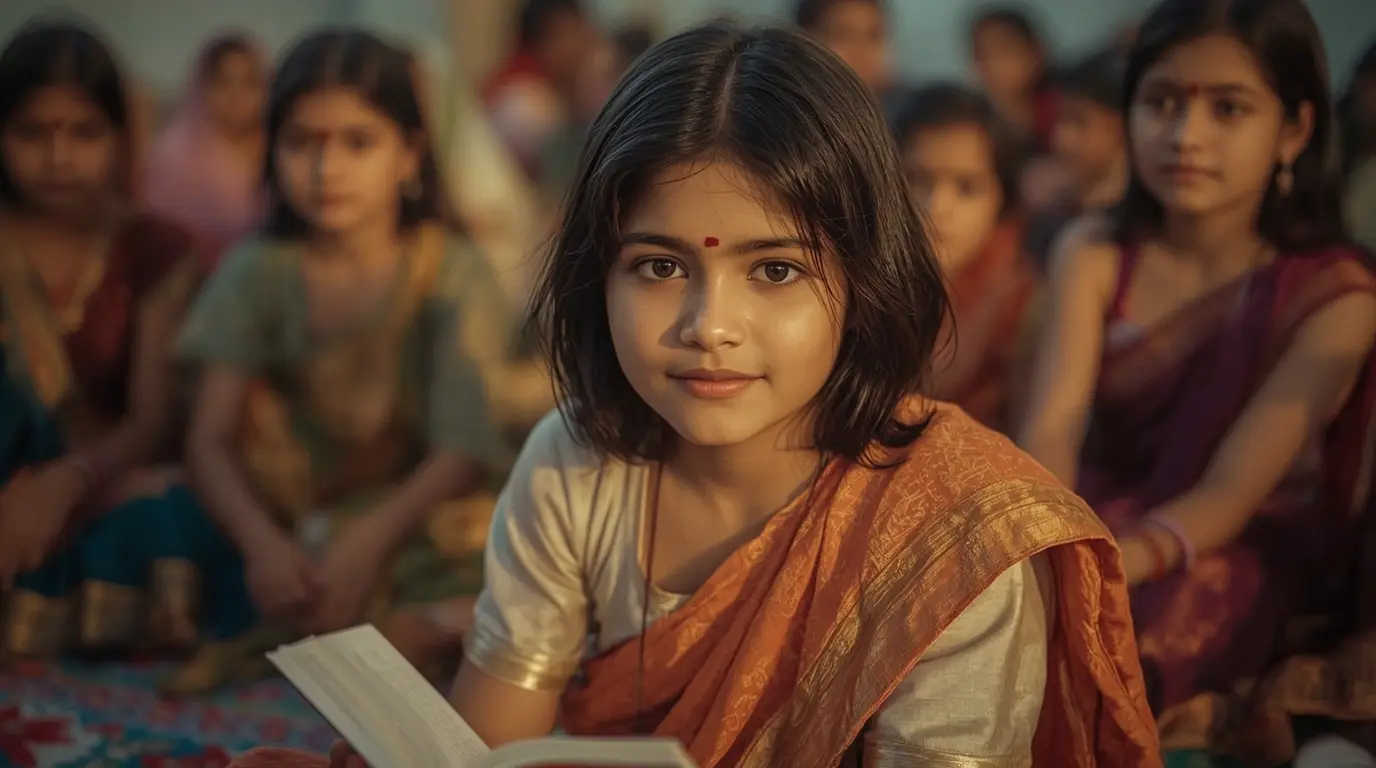The Hidden Reality of Millions of Girls
All around the world, there is an alarming vision of child marriage facing the future of millions of girls, and this is a practice that affects approximately 12 million girls a year by taking away their childhood, education and self-determination. The 2025 State of the World’s Girls Report from Plan International sheds light on the daily lives of girls married or in unions before 18, some as young as 12.
Girls in these unions are left with few options in life. They are often part of informal marriages or domestic partnerships that are not legally recognized. In a recent study, Plan International interviewed over 250 child brides in 15 countries with high child marriage rates. Many of them reported controlling partners, domestic violence, and a lack of educational and employment opportunities.
The stories of Rehana in Bangladesh, Diana in Zambia, and Jen in Ecuador shed light on the different aspects of a girl’s life affected by child marriage. They are married by the tender ages of 14, 16, and 15 and their stories help us understand the wide-reaching consequences of this issue.
The Global Scale of the Crisis
The stats surrounding child marriage shows the dismal picture of the phenomenon’s scope. Around the globe, more than 640million girls and women alive today are child brides, which accounts for a shocking percentage of the female population. Moreover, child marriage cuts across all continents and cultures, although the rate of occurrence differs markedly from one region to another.
Around one third of the world’s child brides live in India, a staggering amount that is equivalent to the total of the next ten countries combined. South Asia carries the burden of 45% of the world’s child brides—290 million of them in total. Even with these poor conditions, current projections state South Asia is on track to eliminating child marriage within 55 years.
To the south, Sub-Saharan Africa has 127 child brides, the second largest proportion globally, 20% the world total, and sadly, the region is 200 years from ending the practice, assuming nothing changes. Latin America and the Caribbean are not much better, projected to have the second worst level child marriage in the world by 2030.
Recognizing the Reasons for the Persistence of Child Marriage. Guided by marriageable age, finance and other social constraints to economic development on a marriage system usually result in marriage, hence, marriage systems are multifaceted and require thorough understanding to resolve.
Economic Pressures and Poverty.
Child marriage is, in some circumstances, a strategy to alleviate economic burdens. In Rehana’s story from Bangladesh, she is “the daughter of a rickshaw puller. We struggled to make ends meet. When Rehana was offered a chance to get married to a wealthy family willing to pay for her education, it looked like a good opportunity to her, and good support for Rehana’s future.”
In Zambia, Diana remembered, “it was hard and we hit rough patches during which we sometimes only had one meal a day”. Situations like this become more logical and understandable for children when “he would give me when I asked something” and when this older man came to offer help.
Societal Mores and Practices
Violent Child Marriage is frequently a function of deep-rooted social practices and harmful gender stereotypes. In numerous societies, girls are married off early as a protective mechanism to avoid any sexual activities before marriage.
Rehana states that in her Bangladeshi community, she is not surprised that “there are a lot of girls who take the initiative to escape and get married. Subsequently, there are some families who, to avoid the embarrassment of having their daughters run away to be with boys of their age, married off daughters much younger”.
In India, there are communities in the state of Rajasthan in which girls as young as one year old are married off. These practices are perpetuated by the powerful caste councils who, in an attempt to safeguard practices poverty councils, socially, and as a consequence impose heavy taxes and, in the worst-case scenario, disallow them to dissolve the marriage.
The Importance of Accessibility and Education
A lack of economic possibilities along with the inability of completing education makes many girls seem as if marriage is the only path they can take. Just like many other girls in Zambia, Diana is in great fear of joining a union a that is due to the discrimination from other people as well as her parents that she will face if she does.
The Insignificant Impacts of Marrying At a Younger Age
Child marriage’s consequences are not merely limited to the negative outcomes on the wedding day. It also affects the girls, along with her family and the surrounding community on a large scale.
Economics and Education
Once a girl enters marriage, the greatest transition she undergoes is from being a school girl to a married woman. It greatly diminishes the chances she has to grow in other fields. According to Diana, she stated that, “when I got married, I was just a dream, and to an engineer. But when I had my baby and had to leave school, I was more than delighted to accept any opportunity.” She now says, “To me, any job now is better than the dream I had when I didn’t have a child and was in school.”
The education that a girl is denied has calculatingly severe global implications. Without the education, the relationships a girl can form with the outside world are threatened.
Health and Well-being
Being a young girl and marrying at a young age poses serious health complications, particularly due to premature pregnancies and childbirth. The limited reproductive autonomy younger women have often leads to motherhood at a young age, which further contributes to the health risks. The younger a woman becomes a mother, the more serious the mental and physical complications become, especially when exposed to domestic violence and control from older partners.
In her own words, a Bangladeshi woman, Rehana said, “It was very tough for me,” when recalling her husband’s mental and physical abuse and how it led her to a position of complete helplessness. The psychological scars associated with such relationships tend to persist for the remainder of the woman’s life, even when the bonds have been severed.
Intergenerational Cycles
In the most pernicious manner, child marriage initiates processes of intergenerational cycles of poverty and opportunity constraining. The children of child brides become victims to insufficient education and healthcare, making it more probable for them to fall prey to the same customs that ensnared their mothers. This cycle can only be disrupted through specific, targeted strategies aimed at the key drivers of child marriage.
Pathways to Change: Effective Solutions to End Chid Marriage
Although the statistics are grim, there is strong evidence indicating that child marriage is avoidable through coordinated and targeted multi-layered strategies. The child marriage and poverty report from UNFPA-UNICEF highlights the most recent evidence-based approaches to child marriage to provide the most effective strategies.
Equipping and Empowering Girls Through Achievable Education and Skills
Among many others, Education is certainly important to combat issues like Child Marriage. Programs such as Advika (“I am Unique”) in Odisha, India for instance, focuses on empowering adolescents with education, leadership, and other activities . Its launched and has already reached 2.5 million adolescents. The program has helped over 11,000 villages become child marriage free and has helped prevent 950 child marriages in the year of 2022.
In addition to the above achievements, the program also provides girls education on Life skills particularly on Financial Planning as well as training on Digital Literacy. The objective of this program is to help Girls to become independent and to also Day for Zoe Birchall from Plan Internation, Child marriage is equated to a dead end for girls does not offer a better path for girls
Self Sufficiency Economic and Independence
Among many factors, the right to child Marriage Poverty is considered as one of the underlying. The marriage is seen as a means to escape Poverty Child vocational training, and Cash Transfers for schooling has shown success. She can visualize supporting her family as well as herself, then this means the option of marriage, will become more acceptable.
Legal Reforms and Enforcement
Laws might not eradicate child marriages completely, but they do provide means for protection. In India, under the Prohibition of Child Marriage Act (PCMA), child marriages are still valid but voidable. Thus, the victims have the right to annul the marriages within two years of attaining majority.
However, legal advancement is still lacking in certain areas. In the case of Iraq, recent amendment within the personal status law has the potential of legalizing child marriage under the jurisdiction of clerics due to Islamic law enabling marriages of girls within the early teenage years.
Community Engagement and Norm Change
At the end of the day, child marriages as a phenomenon, is only going to end, should its associated social norms and traditional practices change. This means they have to work together with communities, religious heads and families to get rid of negative practices and understand the importance of girls, not only tied to marriage.
On the backdrop of the 30 year anniversary of the Beijing Declaration and Platform for Action in 2025, a call to action is to reaffirm the pledge across the globe towards gender equity and the elimination of violence directed towards women and girls.
A Future Without Child Marriage
Child marriage is an issue that needs to be tackled as part of the overarching fight for gender equity and human rights. Although many region, South Asia for example, still faces problems, the strides made in that area prove that change can be achieved through hard work and targeted strategies.

In order to achieve SDG target 5.3, eliminating child marriage by the year 2030, progress needs to be accelerated twenty times. More robust funding for girls’ education and social protection, together with pro-girl policies and norms, is needed.
As Sheema Sen Gupta from UNICEF said, “We can build a future where every girl is safe, educated and empowered” . Child marriage is not simply an issue to be solved, but a matter of justice for a girl, a society, and future generations.
Source: https://edition.cnn.com/2025/09/29/world/child-marriage-impact-worldwide-as-equals-intl
For more incredible stories of everyday news, return to our homepage.




